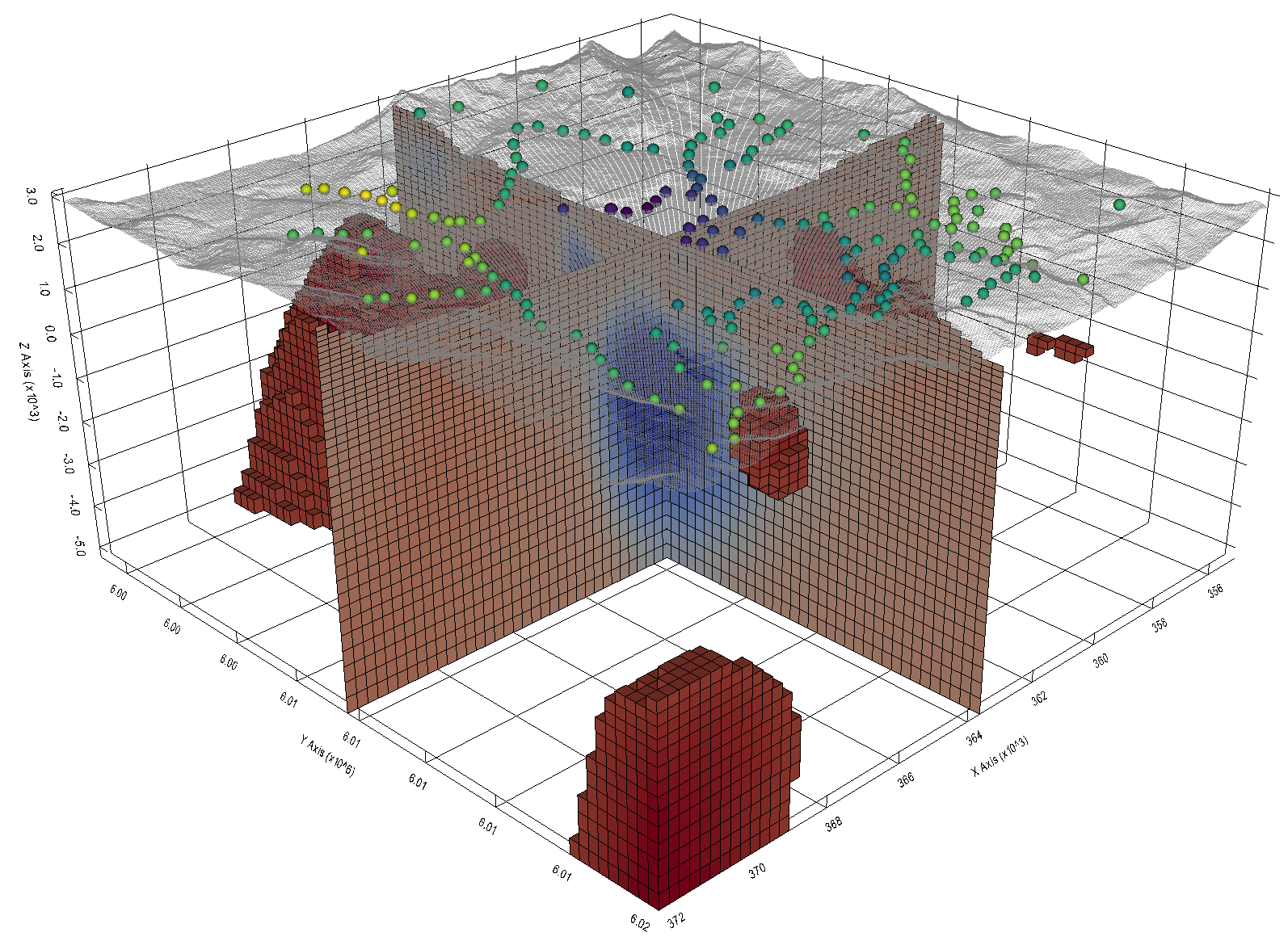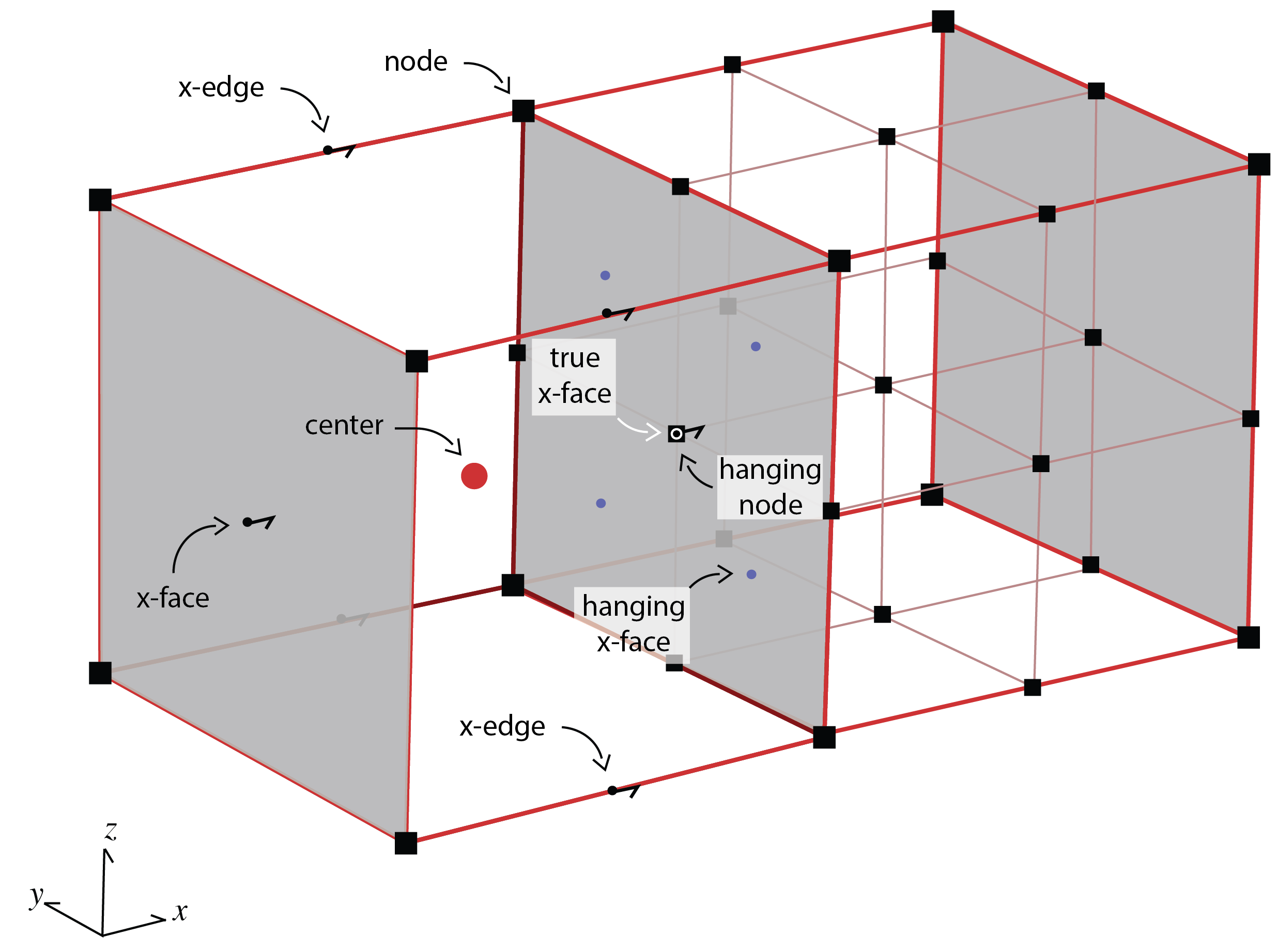
Simulation and Parameter Estimation in Geophysics
An open source python package for simulation and gradient based parameter estimation in geophysical applications.
Geophysical Methods
Contribute to a growing community of geoscientists building an open foundation for geophysics. SimPEG provides a collection of geophysical simulation and inversion tools that are built in a consistent framework.
- Gravity
- Magnetics
- Direct current resistivity
- Induced polarization
- Electromagnetics
- Time domain
- Frequency domain
- Natural source (e.g. Magnetotellurics)
- Viscous remanent magnetization
- Richards Equation

Forward Simulations
Finite volume tools that work across many different discretizations and dimensions. Simulate your geophysical method in 1D, 2D, 2.5D, 3D and through time. Refine around areas of interest using an OcTree.
- Tensor mesh
- OcTree mesh
- QuadTree mesh
- Logicaly rectangular mesh
- Cylindrical mesh
- Access to derivatives
- Plotting utilities
- VTK export

Inversion Components
The SimPEG inversion framework is modular, allowing you to explore, experiment and iterate over a variety of approaches to the inverse problem.
- Optimization
- Regularization
- Data misfits
- Parametric models
- Joint inversions

🚀 Get Started 🚀
The easiest way to install SimPEG is from PyPI, using pip. If you get stuck or have no idea what a pip is, jump on Mattermost or Discourse to ask the community a question!!
📢 Contacting Us 📢
Please don't hesitate to reach out and ask a question! We love to hear about how people are using or want to use SimPEG!
- Sign up for the newsletter
- Join the community forum on Discourse
- Send us a message on Mattermost
- Contact us on GitHub by creating a new issue
- Join a weekly meeting organized on Mattermost or see previous meetings on YouTube
🙌 Contribute 🙌
SimPEG is a community of scientists and volunteers who are excited to help you out, please give back to the community by sharing your successes and citing the project! Here are some ways you can contribute:
- Talk about SimPEG, share links on social media, show our logo in your talks
- Cite the papers and project (see below)
- Submitting bugs when things don't work
- Fix typos and add examples to the documentation
- Contribute some code
SimPEG Framework Paper
Cockett, Rowan, Seogi Kang, Lindsey J. Heagy, Adam Pidlisecky, and Douglas W. Oldenburg. "SimPEG: An Open Source Framework for Simulation and Gradient Based Parameter Estimation in Geophysical Applications" Computers & Geosciences, September 2015. doi:10.1016/j.cageo.2015.09.015.
Electromagnetics Simulations & Inversions
Lindsey J. Heagy, Rowan Cockett, Seogi Kang, Gudni K. Rosenkjaer, Douglas W. Oldenburg. "A framework for simulation and inversion in electromagnetics" Computers & Geosciences, September 2017. doi:10.1016/j.cageo.2017.06.018
Project Ecosystem
SimPEG is an ecosystem with many interrelated projects and repositories.
simpeg
Simulation and inversion utilities for many different geophysical methods.
- simpeg/simpeg
- https://docs.simpeg.xyz
- Stable, but changing
discretize
Finite volume and visualization programs for solving and inverting PDEs.
pymatsolver
A sparse matrix solver for Python. Solving Ax = b should be easy.
geoana
A collection of mostly analytic functions in geophysics.
- simpeg/geoana
- https://geoana.simpeg.xyz
- Ready, but changing